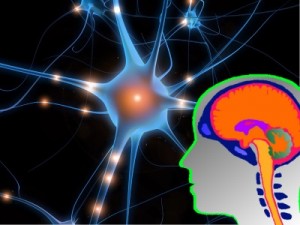
Jim, an astute online friend of mine recently sent me this article. It’s about the work of Elaine Hsiao a scientist at Cal Tech. He saw the words “gut-brain” were in the title and he thought I might be interested in it.
He was right too.
First, some quick background.
In 1996 I became aware of a new article written by a New York Times science writer. It was about new research that had re-discovered a long forgotten second brain in humans. This brain was not at all like the one we’re all familiar with. This brain was found in the linings of the digestive tract and it was such an important find that it sparked renewed interest in an obscure branch of scientific inquiry called ‘neurogastroenterology’. They also gave this brain a name: “The enteric nervous system”.
To me the real kicker was between the lines. This second brain is a doer not a thinker. It can act on it’s own and it feels… everything! Gut feelings are real things. This is contrasted by the brain in the head that thinks wonderfully but doesn’t feel much at all because there are no pain receptors in the From that I could visualize an elegant reciprocal dual-brain system no one has ever thought of before. It takes the shape of a mobius. One brain that thinks but doesn’t feel, and another brain that feels but doesn’t think. The head brain is a conceptualizer the gut brain is an action taker.
Two acting as one — beautiful.
But here’s my main point. I’m kind of a self-help heretic. I’m working to help people who are in the ‘self-help’ category yet I’ve been a fierce critic of the main methods of the industry for a long time. What bothers me the most is it’s way too head-brain centric. Not surprisingly of course, there was only one brain to deal with.
I’ve read leading self-help practitioners say things sort of like this: “The brain thinks mostly negative stuff and that impacts a person’s success so, let’s teach them to switch-out negative thoughts and replace them with positive ones.”
That’s been the cutting edge of most self-help for the last 80 years or so. But wait; hang on a second. We now know there is a second brain that’s been found. But have we seen any training developed for the gut brain? TM maybe?
Nope.
TM requires a deep concentration of thought. Strictly head-brained stuff since you need a thinking brain for that. I was frustrated by all that same old same old, so instead I made this tool.
(End of background.)
The first thing I noticed when I read the article is that the words ‘gut brain’ are never actually used in the text. I did a [control + F] but nothing came up. Ms. Hsiao did talk a lot about digestion though and in the text it did mention the word “brain” twice but it was always in reference to the one in the head. So, I’m not entirely sure that she’s recognizing the fact that there’s actually a second brain located in the gut or not. The word ‘gut’ is found fourteen times since intestinal microbes are what her work is focusing on.
While the initial research carried out by Dr. Michael Gershon and published back in 1996 did show that the brain in the gut operates the various aspects of the digestion function on its own. Ms. Hsiao’s research added a new twist to it. She looked deeper into the workings of the microbiology of the ‘bugs’ in the gut and found connections to some of the pathology of autism in children. She and her team from Cal Tech have gone ahead and actually sequenced the entire DNA of these microbes and are now saying that, in all humans, there is another non-human genome – the “microbiome”.
Personally, I love the duality reference in all of that. I’m glad science has found something new here that helps people – in this case kids with autism. It’s been almost twenty years since Dr. Gershon ‘rediscovered’ the gut brain and I was wondering when new research would produce some more interesting results. The fact that we now have a dual-genomeinality (if that’s a word) is of particular interest to me. I’m always looking to make more sense of the duality of, and in, humans. This new finding helps me to better make the case for my theory of dual immunity – one physical and one ethereal. One that looks after the body (physical) and one that looks after the thinking (ethereal).
It’s basically this: If you as an individual can have two separate sets of brains and two vastly different genomes, then why not two unseen yet potentially active immune systems?
As you can probably tell my particular interest in the gut brain is in an area where scientists can’t ever go. Hobbled by the requirements of hard data and physical evidence science needs to ‘see’ real things. If they can’t it’s either not science or they tend to call it dark like “dark energy” or “dark’ matter”. Although those two terms are more for physicists not physicians.
What all this means is that investigating the unseen invisible ethereal properties of the gut-brain – the areas where the most potential exists – won’t ever be discovered by the experts in white coats.
But I’m not a scientist. So I’m not bound by such constructs. But I don’t see myself as a philosopher either so I’m not going to offer up just some flowery interpretations of what others have found. I’m going to investigate what’s going on down inside those rabbit holes that have driven better men than me totally nuts.
I know from experience that my work does bring forward real usable results in people who have used my tools. Massive beneficial behavioral changes in those whom I have worked with have attested to it. Things like a greater self confidence, a truer sense of their own life purpose, and the ability to set aside fear and worry and to power ahead with a reasonable amount of renewed vigor that seems to never peter-out.
And the beautiful part? I can now prove it to anyone as long as it’s done one-on-one. (Ready to try it? Let’s talk.)
By the way. This is not your mother’s personal development we’re talking about here so don’t even go there. This is different. I like to call it “Human Potential 2.0” because it’s a resetting of the old head-based paradigm to something that includes, in a big way, the gut brain as well.
Of course, it is my sincere hope that Ms. Hsiao, and other scientists like her, continue to uncover more of the mystery of our brain in the gut but first I’d really like them to clearly acknowledge that the gut-brain, which I see as one of the greatest biological discoveries of the last quarter-century, truly does exist.
I know it does, but surprisingly most everyone else hasn’t even heard of it yet. I guess I have my work cut out for me.
More power to you.
![]()
PS: I’m currently working on a new book “The Gut Brain Balm – How the strangest brain ever made saves us from death by stress”. If you’d like to see a sample chapter or two just leave a comment below and I’ll whisk it off to you as soon as it’s ready.
PPS: Need something more? Leave a comment in the box below and we’ll soon be in touch.

